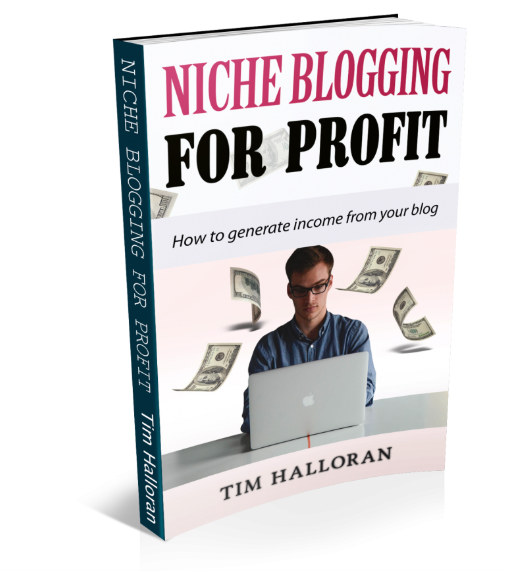How many blog posts does it take to get traffic to your website for free? The general consensus is that you should post more often if you want more traffic. Two to four times a week is the commonly accepted minimal content amount, if you want to grow your audience organically through blogging.

Post more often, and you’re likely to get more traffic. But there’s more to this than the number of times you post. There’s a few main elements which will play a part in whether you get traffic or not, and in how quickly it comes:
- The topic of your blog – in a competitive niche, you’re going to need to create more content for a tiny amount of traffic, less so if you tap into an untapped niche with less competition
- Your content – ideally write at least 1000 words with each blog piece you write. Your blog quality is determined by Google (or another search engine) which uses a number of criteria to make that judgement.
- The competition – obviously in a saturated niche, you’re going to need to do more work for a smaller amount of traffic. In a “noisy” niche, you have your work cut out getting noticed.
- How you write your blog posts – by targeting low competition long tail keywords, you can stand out more quickly with less work.
- How well you promote your content. Creating content is only half of the job. To have your content work for you, you should spend also promote it.
Let’s look at all of these factors in more detail.
How Many Blog Posts To Get Traffic: Blog Topic
My blog topic is based around affiliate marketing, which is pretty competitive. There’s thousands of pieces of content already written on this topic, which makes it much more difficult to compete. If I was to write a blog around the topic of something less competitive, I would expect the journey to be an easier one.

If you choose a topic you’re not that bothered or interested in, it’s going to be difficult coming up with new content pieces. Writing in a topic you love will definitely be a better decision, especially if you need to write for months in order to get traffic.
In a competitive niche, you’re going to need to work longer to get a small amount of traffic. But you can also work smarter by targeting long tail keywords in your content.
How Many Blog Posts To Get Traffic: Content Quality
Not all content is equal. Some blog posts are only 300-400 words long and others are 2000 words. The content which gives the most value isn’t always the longest, but your blog length will definitely be a ranking factor. For the more competitive keywords, it’s going to be tougher to rank your content. This is why many bloggers find long tail keywords with low SEO difficulty and write for those keywords.
With highly competitive keywords, it’s unlikely your blog posts will rank at all. That means the only way to get traffic to them is to share with an email list or post them on other sites or social media platforms. For a new website, Google will often “sandbox” it until it has proven itself. This means your content may take months to rank, even if it’s better than the other content out there.
Blog Promotion
Writing a blog post is only the first step. You also need to promote your posts to make the most out of them. Otherwise you’re relying completely on the search engines to index and find your content. This is not a good idea, particularly as most of your posts won’t rank, even if they are of high quality. Older, more established websites with thousands of backlinks are much more likely to rank than a new website.

By going after longer tail keywords you give yourself more chance of ranking, but you still have no guarantees of ranking. Therefore it’s important to make the most out of your content by posting it, sharing it and promoting it as much as possible. You can do this by:
- Posting content on social media – you can even automate this process with a simple plugin (see best blog plugins for WordPress).
- Placing share buttons on your website – to make it easy for visitors to share on social media
- Sending your new posts to your email subscribers (get an email list for free)
- Paying for ads to your content
- Building back links to content from other websites – guest posting and blog commenting
Traffic & Sales
Traffic to your website isn’t the full story either. Once you start getting traffic organically like this, it comes in dribs and drabs, not a flood! Initially you will start to see the odd visitor to your site, then a few and over time maybe 10-20 a day, then 50-100 and so on.
This can be tough initially, especially if you have chosen a tough topic. This is why you should choose something you love to write about. It makes the process much easier. Once you start getting traffic, it doesn’t automatically mean you’ll make sales. Depending on how targeted your traffic is, and what you’re selling, it can still take some time to make a website profitable.
Targeted traffic isn’t the same as any old traffic. targeted traffic means you’re specifically creating content to attract a specific audience – ideally that audience who will want whatever you’re selling. See also customer avatar worksheet.
Traffic Into Sales
To turn traffic into sales isn’t as easy as you might like it to be. Most website traffic is people looking for information. With a product review, for example, that’s traffic looking to buy something specific. This is why it’s important to understand your target audience, before you go ahead and create a tonne of content.

It’s easier to turn the “right” traffic into sales than the wrong kind of traffic. But either way, most people need several “touch points” with a product/service before they make a buying decision. How many touch points before a sale? This depends on your traffic and products by typically it’s between 6 and 8. Most of your website traffic won’t convert into buyers! Only around 1-3% will. You can improve this statistic with a couple of strategies:
- Target your content carefully with your “perfect customer” in mind
- Build an email list which allows you to build longer term relationships with potential customers
To build an email list, you can offer something of value on your website. This encourages people to sign up to your list to receive your emails. See the power of email marketing for more on this.
Summary
So, how many blog posts to get traffic? How much traffic do you want? What is your niche? The answers to these questions should help you see what you need to do as a blogger. In a competitive niche, expect to work longer to get traction on your blog. By learning about who you want to target with your content, and by finding long tail keywords with low SEO difficulty, you can make the most out of your work. You’ll also need to promote your blog posts as much as possible if you want traction.
But still, blogging is definitely a longer term marketing strategy than paid marketing. Ultimately though a blog can give you free traffic, which is why there’s over 600 million blogs on the internet, competing for that free traffic! Most bloggers agree that the more you post, the better. An average of posting two to four times a week is recommended as a minimum. Will you get more traffic if you post more often? That depends on all the factors mentioned in this post!
If you choose a topic you’re passionate about, the blogging journey is more about the journey than the destination, plus, you’re more likely to succeed because you’ll enjoy it.
“The man who enjoys walking will go further than the mane who likes the destination”.
